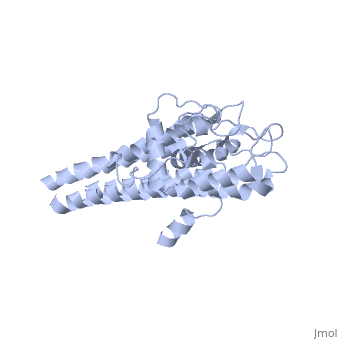SB2013 L04gr5
From Proteopedia
VlsE
Lyme disease is the most pervasive tick-borne disease in Europe, the United States, and parts of Asia (Couette et al. 2009). It is a multistage infection caused by the spirochete Borrelia burgdorferi. Early symptoms include headaches, depression, rash, and fever. If Lyme disease is left untreated serious complications of the joints, heart and central nervous system can occur. Infected Ixodes ticks in their nymph stage transmit Lyme disease by attaching to humans and other mammals (Lab tutor). In most cases, the tick must be attached for 36-48 hours before the bacteria can be transmitted (CDC website).
VlsE, Vmp-like sequence Expressed protein, is a lipoprotein on the surface of Borrelia burgdorferi. VlsE contributes to the immune evasion and persistence of Lyme disease (Couette et al. 2009). VlsE contains invaraible and varaible domains. It was found that the varaible domain is highly immunogenic and the target of the immune response; however, through antigenic variation the lipoprotein is able to evade the host immune system (Liang et al. 1999).
Within the varaible domain there are invariable regions that remain unchanged during antigenic varaition, and therefore may be targets of an immune response. IR6, the most conserved IR, has been found to be immnodominant. The antigencity of each of the 6 IRs have been studied using peptide-based enzyme linked immunosorbent essays, ELISA.(Liang et al. 1999).
|
|
Proteopedia Page Contributors and Editors (what is this?)
Emma Brower, Julia Joseph, Alexandra DePastene, Olivia Rodrigues, Alexander Berchansky, Michal Harel

